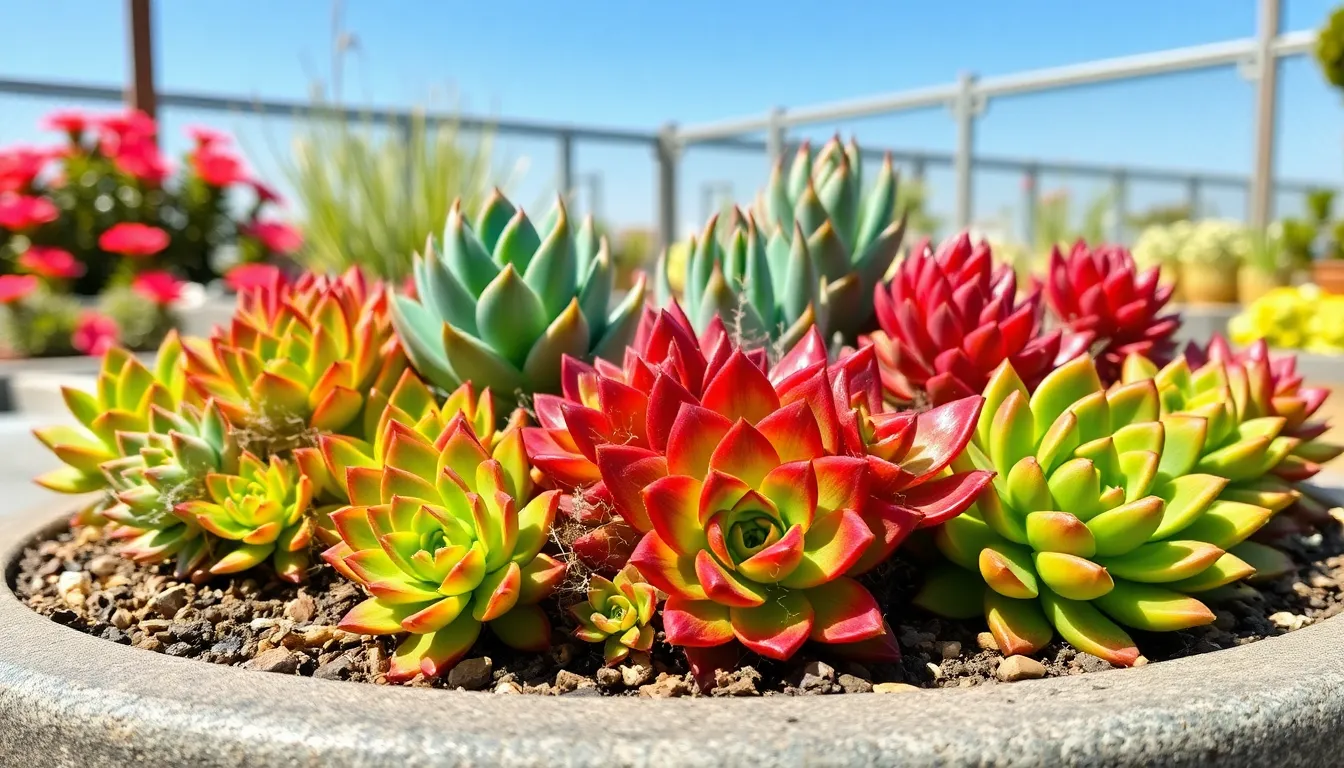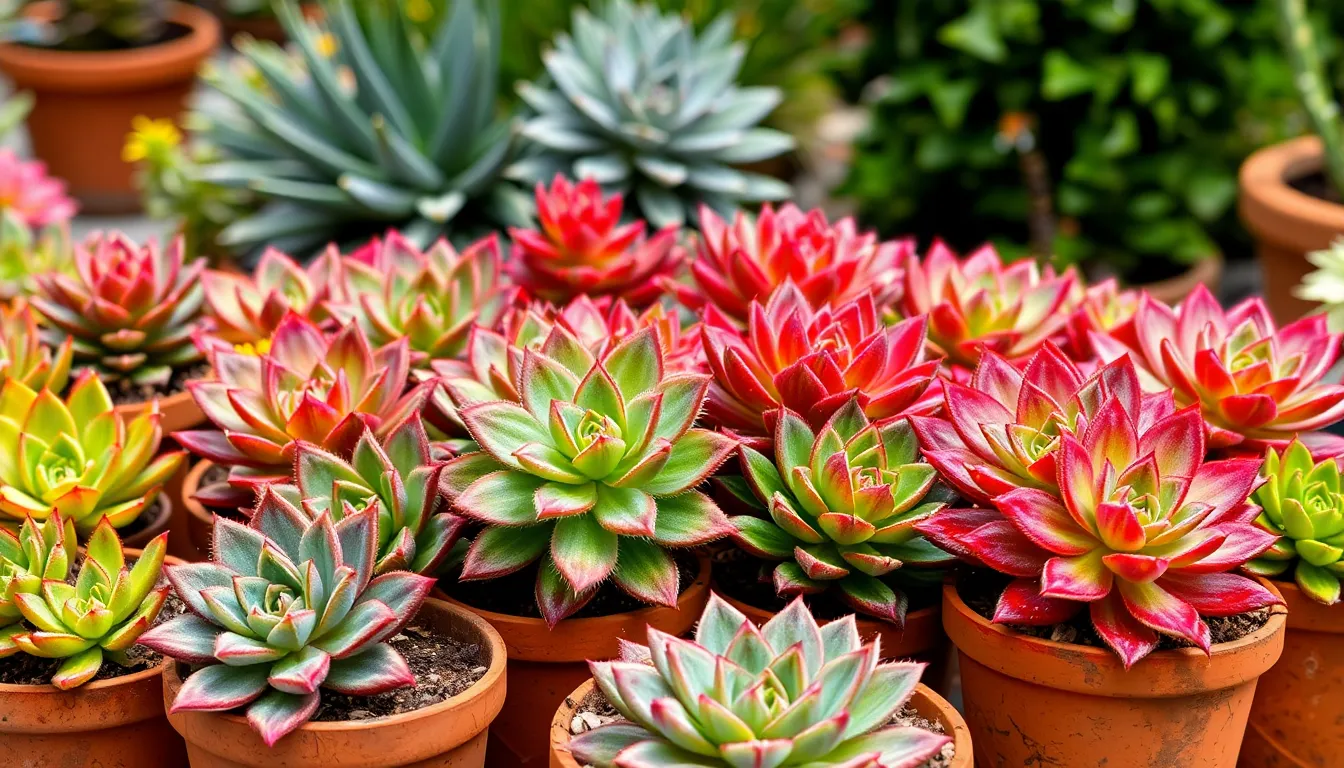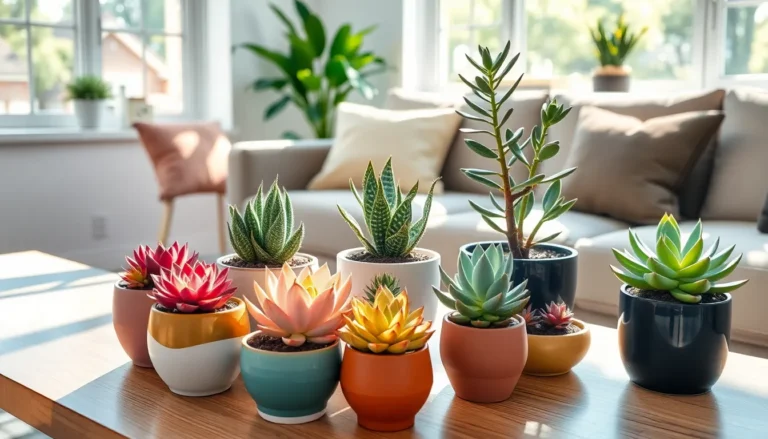The Best Fluffy Pancakes recipe you will fall in love with. Full of tips and tricks to help you make the best pancakes.

Sempervivum Succulents: The Ultimate Guide to Transform Your Garden with Low-Maintenance Beauty
Sempervivum succulents, often known as hens and chicks, are the ultimate low-maintenance plants that can make any garden feel like a desert oasis. With their quirky rosette shapes and vibrant colors, these little green wonders are like the cool kids of the plant world—easy to care for and always ready to impress. If you’ve ever wanted to bring a touch of charm to your home without the fuss of high-maintenance flora, sempervivum is the answer.
Sempervivum Succulents
Sempervivum succulents, known as hens and chicks, belong to the Crassulaceae family. These hardy plants thrive in a variety of environments, making them ideal for both outdoor gardens and indoor spaces. Each plant develops a rosette shape, which showcases an intriguing architectural design. Colors vary significantly, ranging from bright greens to deep purples and reds.
Notably, Sempervivum succulents adapt well to poor soil and require minimal water. Their ability to store moisture enables them to endure dry conditions. Placing them in well-draining soil ensures their health and longevity. Direct sunlight usually suits these plants, emphasizing their vibrant hues.
Propagation occurs easily with Sempervivum succulents. They produce offsets, or chicks, that can be separated from the mother plant. These offsets offer a straightforward method for expanding a succulent collection. Additionally, the plants’ resilience makes them less susceptible to pests and diseases, further contributing to their popularity.
Caring for Sempervivum involves basic tasks like occasional watering and removing dead leaves. This minimal maintenance requirement appeals to many gardeners. Overall, Sempervivum succulents provide an attractive addition to any green space, combining beauty and practicality in a single plant.
Types of Sempervivum Succulents

Numerous Sempervivum varieties exist, each with distinct characteristics. Understanding these types enhances the gardening experience.
Common Varieties
Sempervivum tectorum, also known as common house leek, shows bright green rosettes that can turn reddish with full sun exposure. Sempervivum arachnoideum features cobweb-like threads over its leaves, adding a unique texture. Sempervivum ‘Oddity’ stands out with its unusual purple and green color pattern. Sempervivum ‘Pacific Blue’ showcases blue-green foliage that is highly resilient. Sempervivum ‘Royal Ruby’ exhibits deep red tips, creating a striking contrast against its green base. Many gardeners appreciate these varieties for their hardiness and aesthetic appeal.
Unique Features
Resilience defines Sempervivum succulents, allowing them to thrive in harsh conditions. They tolerate drought, making infrequent watering sufficient. Each plant’s rosette shape encourages proper drainage, preventing rot. Colors can shift based on light exposure, offering a dynamic visual display. Most varieties produce offsets, or chicks, making propagation effortless. Their ability to adapt to various environments contributes to their popularity among plant enthusiasts, enhancing both indoor and outdoor spaces.
Growing Sempervivum Succulents
Growing Sempervivum succulents requires understanding their specific needs. Success with these hardy plants often hinges on providing the right conditions.
Ideal Growing Conditions
Sunlight plays a crucial role in the growth of Sempervivum. These succulents thrive in full sun, ideally receiving 6 to 8 hours daily. Cooler temperatures between 65°F and 75°F promote healthy growth, although they can tolerate dips to 30°F. Bright light enhances their vibrant colors, particularly for varieties like Sempervivum tectorum. Air circulation matters too; it helps prevent mold and rot. Select a spot with good airflow to ensure optimal health for the plants.
Soil Requirements
Well-draining soil is vital for Sempervivum succulents. A mix specifically designed for cacti or succulents typically works best. Incorporate sand or perlite to enhance drainage further. Soil pH between 6.0 and 7.0 suits these plants, preventing root rot and other complications. Many gardeners create a custom blend using potting soil, sand, and pumice for perfect conditions. Amending existing soil to improve drainage often leads to thriving plants. Avoid heavy clay or compacted soils, as these can hinder growth and promote issues.
Care Tips for Sempervivum Succulents
Proper care ensures that Sempervivum succulents thrive and maintain their vibrant appearance. Key aspects include watering and sunlight, which significantly influence their health.
Watering Guidelines
Watering Sempervivum succulents requires careful consideration. Allow the soil to dry out completely between waterings to prevent root rot. Typically, watering every two to three weeks suffices during the growing season. In winter, reduce watering even further, as the plants enter dormancy. Utilize room-temperature water and avoid wetting the leaves to minimize fungal issues. Check moisture levels by inserting a finger into the soil. If it feels dry, it’s time to water again.
Sunlight Needs
Sempervivum succulents flourish with ample sunlight. Full sun exposure, ideally 6 to 8 hours daily, promotes healthy growth and enhances their color. Position them in areas that receive morning or late afternoon sun to avoid harsh midday rays. These hardy plants tolerate slight shade but may become leggy or lose their vibrant hues without enough light. Monitor their growth, and adjust positioning as necessary to maintain optimal light conditions.
Conclusion
Sempervivum succulents offer a delightful blend of beauty and resilience. Their low-maintenance nature makes them perfect for both novice and experienced gardeners. With a variety of shapes and colors to choose from they can effortlessly enhance any garden or home decor.
These hardy plants thrive in diverse conditions and their ability to withstand drought adds to their charm. By understanding their specific care requirements gardeners can enjoy the vibrant display of Sempervivum throughout the seasons. Whether used in outdoor landscapes or as indoor accents these succulents remain a popular choice for anyone looking to add a touch of greenery to their space.




